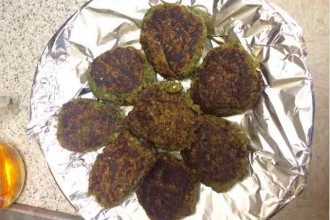As women, we often juggle multiple responsibilities—family, career, self-care—and it’s easy to overlook our own health. But when it comes to stroke, awareness and timely action are crucial. Did you know that women are not only more likely to have a stroke than men but also often experience unique symptoms that can make diagnosis trickier? Let’s dive into what every woman should know about stroke, including prevention, risk factors, and recovery.
What Is a Stroke?
A stroke occurs when blood flow to a part of the brain is interrupted, either due to a blocked blood vessel (ischemic stroke) or a ruptured one (hemorrhagic stroke). Without oxygen, brain cells begin to die, leading to potential long-term damage or even death.
Symptoms of Stroke in Women
While common stroke symptoms apply to everyone—sudden numbness, confusion, trouble speaking, or difficulty walking—women experience less typical signs of stroke in women including:
- Sudden general weakness
- Extreme fatigue
- Hiccups
- Chest pain or heart palpitations
- Difficulty breathing
- Confusion or disorientation
- Sudden behavioral changes
- Nausea or vomiting
- Seizures
These unique symptoms can sometimes delay recognition and treatment, making it essential for women to be vigilant.
How Stroke in Women Differs from Men
- Risk Factors:
Women have additional risk factors such as:- Pregnancy complications (like preeclampsia)
- Hormonal changes from birth control or hormone replacement therapy
- Higher likelihood of autoimmune conditions, such as lupus or rheumatoid arthritis, which increase stroke risk.
- Recovery:
Women often face longer recovery times and are more likely to have post-stroke depression or a diminished quality of life.
Who Is at Risk?
Some factors are universal, but certain conditions uniquely affect women:
- Age: Stroke risk increases after menopause as estrogen levels drop.
- Hypertension: High blood pressure is the leading cause of stroke, and women often develop it later in life.
- Diabetes: More women than men experience complications from diabetes, increasing stroke risk.
- Lifestyle Factors: Smoking and sedentary lifestyles disproportionately affect women’s stroke risk.
Other contributing factors include obesity, migraines (especially with aura), and a family history of stroke.
Tests to Check for Stroke Risk
It’s vital to keep a close eye on your heart and brain health with regular medical checkups. Key tests include:
- Blood Pressure Check:
- Frequency: Every year (or more often if you have hypertension).
- Goal: Below 120/80 mmHg.
- Cholesterol Screening:
- Frequency: Every 4-6 years (or more often if abnormal results or a family history is present).
- Goal: LDL (“bad cholesterol”) below 100 mg/dL.
- Blood Sugar Test:
- Frequency: Annually if you’re at risk for diabetes.
- Goal: Fasting glucose below 100 mg/dL.
- Body Mass Index (BMI) and Waist Circumference:
- Goal: BMI between 18.5 and 24.9; waist circumference under 35 inches.
- Advanced Imaging (if at high risk):
- Carotid ultrasound or CT angiography to assess blood flow in the neck and brain.

How to Ensure Cardiac and Brain Health
Stroke prevention is about nurturing your overall well-being. Here’s how you can take charge:
Lifestyle Tips
- Eat for Your Heart:
- Focus on a Mediterranean-style diet: vegetables, fruits, whole grains, nuts, and olive oil. Cut back on processed foods and sugar.
- Swap white rice for whole grains occasionally.
- Exercise Regularly:
- Aim for at least 150 minutes of moderate-intensity activity weekly.
- Mix strength training (even bodyweight exercises) with cardio activities like brisk walking or swimming.
- Quit Smoking:
- Women smokers are at higher risk of stroke compared to men. If you need help quitting, reach out for support—it’s never too late.
- Limit Alcohol:
- Keep it to one drink per day—yes, even those tempting Friday glasses of wine.
Mental and Emotional Well-being
- Manage Stress:
- High cortisol levels increase stroke risk. Practices like yoga, meditation, or journaling can work wonders.
- Sleep Well:
- Aim for 7-9 hours of quality sleep per night. Poor sleep, especially if caused by conditions like sleep apnea, increases stroke risk.
Recovery After Stroke
Recovery from a stroke is a marathon, not a sprint. The key pillars include:
Physical Rehabilitation
- Therapy: Occupational and physical therapy to regain strength and mobility.
- Home Exercises: Work with your therapist to create a tailored routine.
Mental Adjustments
- Be Patient: Cognitive functions like memory or problem-solving may take time to return. Celebrate small victories.
- Seek Support: Post-stroke depression is common. Counseling or support groups can help immensely.
Additional Tips for Women
- Listen to Your Body:
Don’t ignore unusual symptoms, even if they seem minor. - Partner with Your Doctor:
Regular checkups are your best defense against hidden risk factors. - Know Your Family History:
Sharing this information helps your doctor personalize your care. - Advocate for Yourself:
Women’s health concerns are sometimes dismissed. Don’t hesitate to push for answers or a second opinion if you feel unheard.
Ladies, taking care of your heart and brain health is an act of self-love. Remember, prevention is powerful, and even small changes in your lifestyle can have a big impact. Recognize the signs of a stroke, know your risks, and prioritize regular checkups. If you or a loved one experiences any symptoms, seek medical help immediately—every second counts.
Together, we can protect our health, support each other, and live vibrant, fulfilling lives. 💖






